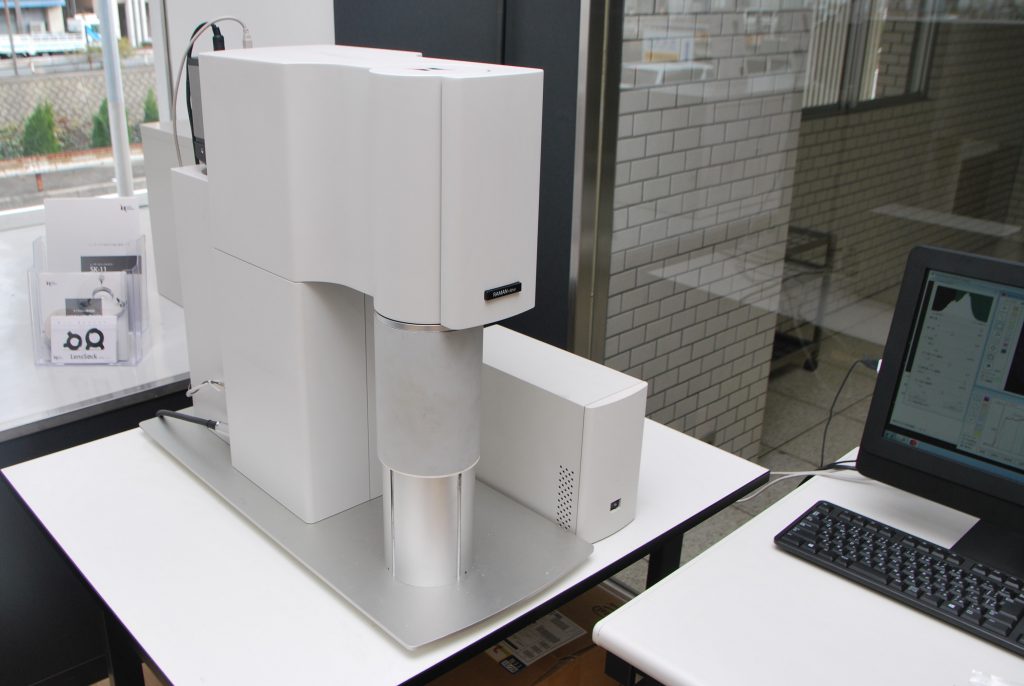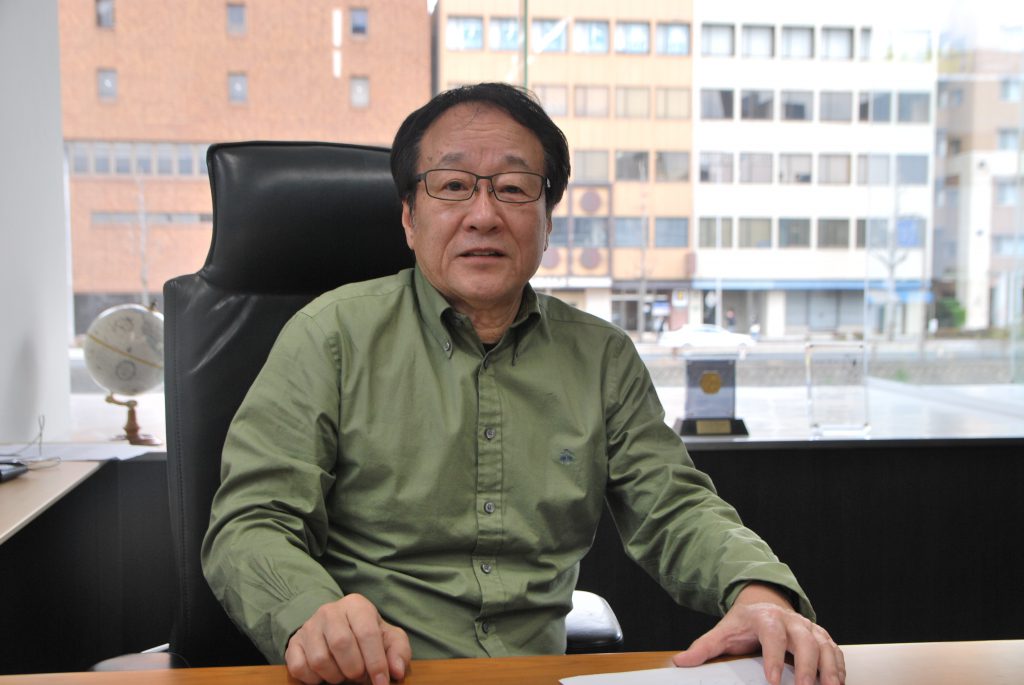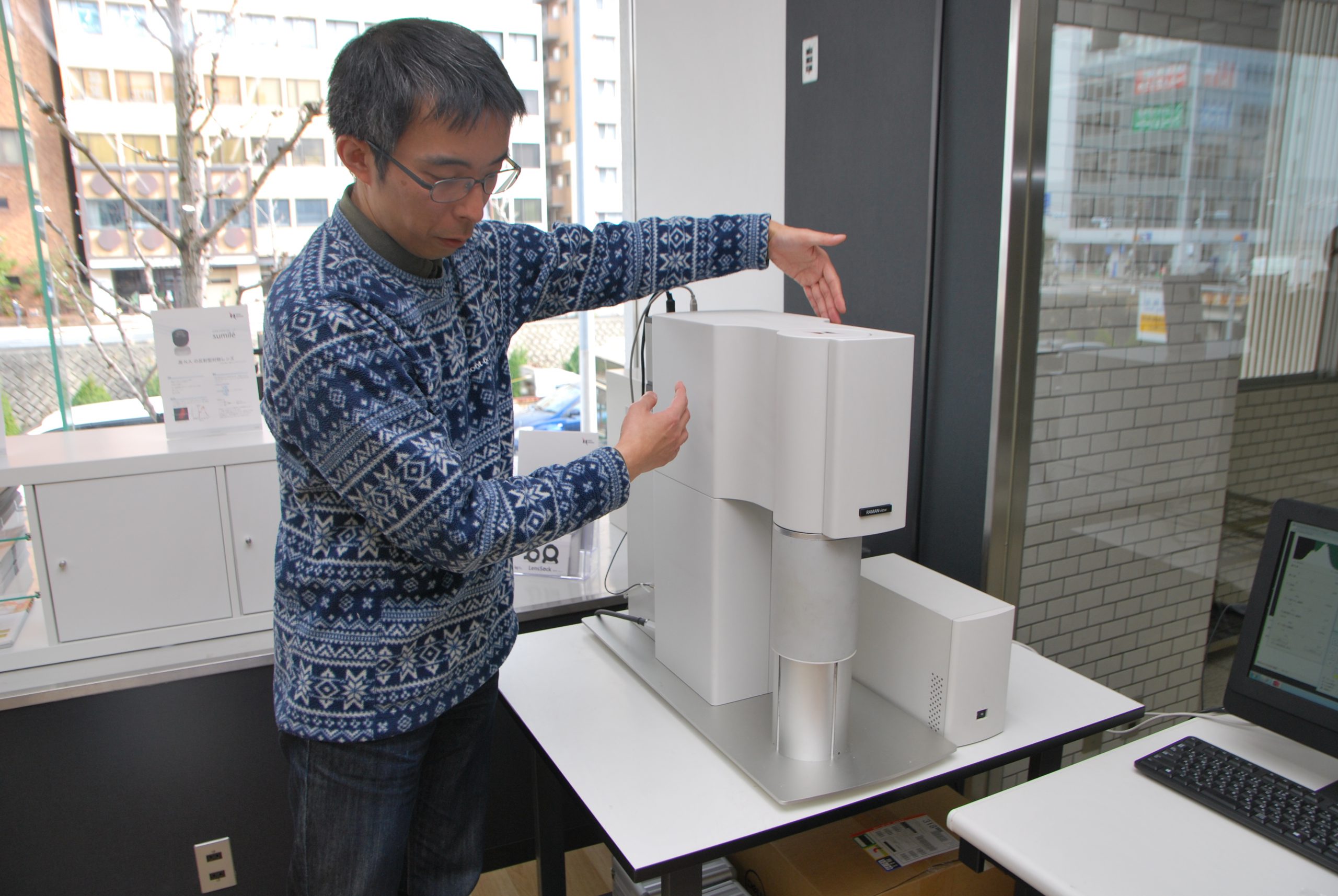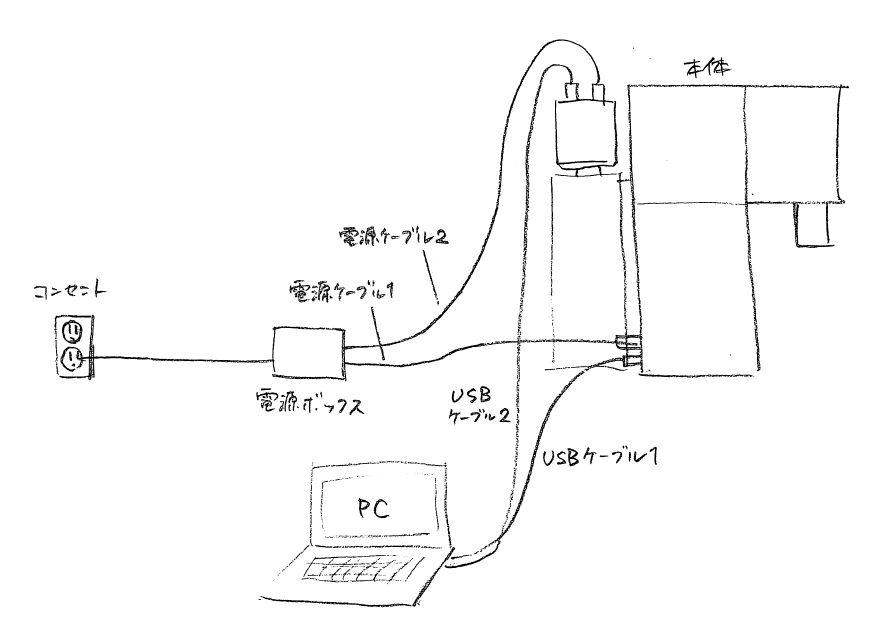Email Magazine
RAMANview (2/3/2021)
Nanophoton’s wide-field Raman scope “RAMANview” is capable of observing the entire image of a sample as large as a tablet, and is also good at measuring samples with height differences on the surface. In addition to these features, the concept behind the development of the RAMANview was “a compact and lightweight body that can be easily carried around. Actually, I did not know this until recently. This time, I asked him about RAMANview in detail. (e-mail Newsletter editor-in-chief / freelance writer Takeshi Nemoto)

Last month, Mr. Tetsuro Kurata, former mayor of Minoh, visited Nanophoton and was touring the newly opened Osaka showroom. One of our employees explained RAMANview as “a device that can be carried. I was standing next to him and thought, “What? I thought, and hurriedly wrote it down. I have been involved in the publication of Nanophoton’s newsletter for about 8 months now, but this was the first time I heard about it.
RAMANview, which was released in September 2012, was, as I understand it, “a Raman microscope that can measure large samples. This is because when I interviewed Mr. Minoru Kobayashi, the director in charge of technology, I had this exchange with him.
What is your favorite product that you have been involved in?
Kobayashi: Actually, it is the wide-field Raman scope “RAMANview. This is because it was the first product I planned by myself. It’s like having a cute child.
Kobayashi: RAMANview is a device for looking at large specimens, and RAMANtouch uses the objective lens of a microscope, but I believe that the appropriate way to look at something depends on what you want to see. In some cases, a magnifying glass is appropriate, and in other cases, a stereomicroscope is used to see more details. I thought it would be good to have a device other than a microscope to observe with Raman spectroscopy, so I designed RAMANview.
What size of objects is it suitable for?
Kobayashi: The size of an object is about the size of a 500 yen coin. You can look at an entire medicine tablet at once, or you can observe a sample submerged in liquid nitrogen as it is. It can also be used to look at an entire rock at once. I like the challenge of making a device that doesn’t exist in the world.
The objective lens can be selected from 0.3x to 2.0x, and the brochure explains that the microscope is “equipped with an optical system optimized for stereomicroscope objectives,” has “an extremely wide field of view,” and “enables out-of-focus Raman imaging even when there is a height difference of 1 mm or 2 mm on the sample surface.
So what exactly does “transportable” mean? We asked Chairman Satoshi Kawata and Director Kobayashi to explain RAMANview again.
The development of RAMANview started when one of the employees at a pharmaceutical company asked for a Raman imaging system that could see the surface of a tablet as it is. Tablets have a curved surface, so even if you try to look at them all at once with a microscope, you will not be able to focus on them. The resolution does not have to be very high, but I want a device that can see the whole thing. To meet this need, we started to develop a Raman imaging system that uses the objective lens of a stereo microscope.
Mr. Kobayashi: “Originally, I wanted to make a device for viewing large samples. The development code for the prototype is “tsubas,” a fish that has come of age. The first model was a yellowtail. We improved on that and came up with ‘whitebait’.”
Mr. Kawata: “We have made it possible to see objects of a certain size with a wide field of view, rather than seeing small objects with high resolution. Since we don’t need a high level of accuracy, we pursued a compact and lightweight body that can be carried easily. We thought it was important to be able to transport it by courier service rather than chartering a special truck.

RAMANtouch,” Nanophoton’s high-performance laser Raman microscope, which boasts the fastest speed and the highest image quality, has also been made smaller, but it weighs about 70 kg. Some Raman devices from other companies weigh more than one ton. Moreover, since it is a precision instrument, we have to be very careful when transporting it. Conventional equipment had to be transported by chartered trucks and assembled by technicians on site.
On the other hand, the completed RAMANview weighs only about 35 kg. It is also compact, with a width of 30 cm, height of 61 cm, and depth of 72 cm.

Mr. Kobayashi: “We developed RAMANview with the goal of sending the product to customers so that they can install and use it themselves. In this way, we can easily sell the product overseas and send it back to the customer for support in case of trouble. For this reason, we not only made the product smaller, but also reduced the number of cables as much as possible.

Currently, technicians visit the site to assemble the system, but of course, customers can install the system themselves. In some cases, they have sent them to customers who wanted a demonstration. Once you receive the device, you can connect it to your computer, follow the manual, and you are ready to use it. So far, RAMANview is the only device that can be used in this way.
What were some of the difficulties in development?
Director Kobayashi: “It’s not so much a hardship as a ……. This was the first time we manufactured a spectroscope in-house, but when we actually made it, we found that light was reflected in places we had not expected and sometimes entered the detector. After repeated trial and error, we decided on the structure to some extent and asked the designer to come up with a design. The next step was to figure out where to put the electrical circuits given the space constraints. It was like a puzzle, if I moved this here, there would be a gap, so I would put this here.
They also conducted vibration tests in consideration of vibration during transportation.
Mr. Kobayashi: “We put it on a vibration test machine many times. We checked which parts would break, which screws would loosen, etc., and improved the structure so that it would not need to be readjusted when sent by courier.
In addition to the pursuit of compactness, we also paid attention to design.
Mr. Kawata: “When we designed the product to be small and light, functional beauty came out. People find added value in coolness and will pay for it. The Raman microscope is also cool.